Se os seus vídeos subaquáticos frequentemente ficam tremidos ou lentos, um sea scooter pode fazer uma grande diferença. Ajuda-o a deslizar suavemente, tornando muito mais fácil filmar planos estáveis e com aspeto profissional. Este guia mostrará como usar um para melhorar a sua realização de filmes, para que possa capturar filmagens melhores na sua próxima mergulho.
Como Escolher o Seu Sea Scooter e Equipamento de Câmara
Principais Vantagens de Usar um Sea Scooter para Filmagem
Um sea scooter é mais do que apenas uma forma de se deslocar; é uma ferramenta poderosa para realização de filmes que resolve muitos desafios comuns em vídeo subaquático.
Filmagens Suaves e Estáveis
A propulsão constante de um sea scooter cria uma plataforma de filmagem incrivelmente estável, agindo como um dolly móvel. Isto elimina o movimento brusco para cima e para baixo que muitas vezes resulta de chutar com barbatanas, permitindo-lhe alcançar o tipo de planos de seguimento suaves que vê em filmes profissionais.
Maior Alcance de Disparo
Com um sea scooter, pode cobrir facilmente grandes áreas como um navio naufragado inteiro ou um longo recife de coral num único mergulho. Isto aumenta dramaticamente as suas oportunidades de encontrar sujeitos únicos e capturar uma variedade diversificada de imagens para contar uma história mais completa.
Movimento Criativo da Câmara
Os sea scooters desbloqueiam movimentos dinâmicos de câmara que são quase impossíveis para um nadador realizar. Pode circular suavemente um sujeito estacionário para uma tomada "orbital" de 360 graus, ou executar uma subida controlada para criar uma revelação dramática de uma paisagem subaquática.
Conservação de Energia e Ar
Ao deixar o sea scooter fazer o trabalho físico, conserva muita energia e ar. Isto não só permite mergulhos mais longos, como também liberta a sua capacidade mental para se concentrar totalmente nos aspetos criativos da sua filmagem — como composição, foco e exposição.
Como Selecionar o Sea Scooter Certo para Filmagens
Um sea scooter para filmar precisa de ser uma ferramenta fiável que lhe dê controlo criativo. Eis o que deve procurar.
Procure Velocidade Variável e uma Bateria de Longa Duração
O controlo de velocidade variável é essencial. Vai precisar de uma velocidade lenta para tomadas deliberadas e uma velocidade mais rápida para acompanhar a vida marinha ou lidar com correntes. Criticamente, verifique o tempo de funcionamento contínuo do scooter em cada velocidade para garantir que a bateria dura durante todo o mergulho.
Escolha um Modelo Fácil de Manusear e Transportar
Procure um scooter com flutuabilidade neutra ou ligeiramente positiva para que seja fácil de manusear e não afunde se o largar. Um modelo bem equilibrado é crucial para obter imagens precisas. Se viajar, um scooter mais leve com baterias removíveis e compatíveis com companhias aéreas é muito mais conveniente.
Assegure-se de que Tem Boas Opções de Montagem para a Câmara
Um scooter para filmar deve ter pelo menos um suporte padrão para uma câmara de ação. Modelos melhores oferecem mais flexibilidade, como pontos de fixação extra ou superfícies planas para montar tabuleiros personalizados que podem suportar câmaras e luzes maiores.
Como Montar o Seu Equipamento de Câmara Subaquática
O seu equipamento de câmara deve estar configurado para funcionar perfeitamente consigo e com o seu sea scooter.
Comece por Escolher a Câmara Certa
A escolha da sua câmara depende dos seus objetivos e orçamento.
· Câmaras de Ação (GoPro): O ponto de partida mais simples e duradouro.
· Câmaras Compactas (Olympus TG): Um bom avanço em qualidade de imagem e controlo.
· Mirrorless/DSLR em Caixa Estanque: A escolha profissional para a melhor qualidade de imagem, mas esta configuração é volumosa, complexa e cara.
Alcance Flutuabilidade Neutra e Equilíbrio
O objetivo é tornar todo o seu suporte (câmara, suporte, luzes) neutro em flutuabilidade para que pareça sem peso. Consegue isso ao fixar braços de flutuabilidade e flutuadores de espuma ao suporte da câmara para compensar o peso. Um suporte equilibrado é estável e fácil de guiar, o que é essencial para imagens suaves.
Adicione Luzes de Vídeo Essenciais
Luzes de vídeo são obrigatórias para restaurar as cores que se perdem debaixo de água. Como a água absorve vermelhos e amarelos, precisa de luzes para evitar imagens azuis ou verdes. Use duas luzes de vídeo de feixe largo montadas em braços de cada lado da sua câmara para iluminação uniforme e para eliminar sombras fortes.
Complete o Suporte com Acessórios Essenciais
· Suporte da Câmara: A base que segura a sua câmara e fornece pontos de montagem para pegas e braços.
· Braços Articulados: Braços flexíveis usados para posicionar as suas luzes ou um monitor externo.
· Monitor Subaquático: Um ecrã separado, maior, que torna muito mais fácil confirmar o foco e enquadrar os seus planos com precisão.
O seu sea scooter e o suporte da câmara são as suas ferramentas principais para contar histórias debaixo de água. Depois de selecionar e montar o sistema certo, estará preparado para se concentrar na parte mais importante: as técnicas criativas para capturar imagens impressionantes.

Técnicas de Filmagem com o Seu Sea Scooter
Agora que o seu equipamento está pronto, é hora de filmar. Esta secção cobre as técnicas mais importantes para movimento de câmara, enquadramento e iluminação para o ajudar a obter planos com aspeto profissional.
Planos Essenciais de Câmara com Sea Scooter
Dominar alguns movimentos básicos de câmara vai melhorar drasticamente os seus vídeos. Aqui estão os planos mais eficazes que pode conseguir com um sea scooter.
1. Filmagem Dolly
Este é um movimento suave, lateral, paralelo a um sujeito, ou um movimento direto em direção ou afastando-se dele.
Como fazer: Use a velocidade mais lenta do seu scooter para se mover ao lado do seu sujeito a uma distância constante. Também pode mover-se lentamente em direção a um sujeito (um "push-in") para atrair a atenção do espetador.
2. Filmagem Orbital
Isto envolve circular um sujeito estacionário para o mostrar de todos os lados.
Como fazer: Circule o seu sujeito mantendo a mesma distância. Aponte o scooter ligeiramente para longe do sujeito e use o seu corpo para guiar num arco suave. Esta filmagem é ótima para mostrar um ponto de interesse, como uma cabeça de coral ou uma âncora num naufrágio.
3. Seguir e Voar Através
Estas filmagens criam uma sensação imersiva de viagem ao seguir um animal ou mover-se através de uma estrutura.
Como fazer: Para seguir um animal, iguale a sua velocidade e tente antecipar os seus movimentos sem o stressar. Para um voo através, como passar por uma abertura num naufrágio, planeie o seu percurso antecipadamente e mova-se suavemente através dele.
4. Subir e Descer
Usar movimento vertical pode fazer uma cena parecer massiva e dramática.
Como fazer: Use o scooter para manter uma velocidade vertical controlada e constante. Uma subida lenta por um naufrágio alto ou uma descida num blue hole pode ser muito poderoso. Certifique-se sempre de equalizar os seus ouvidos.
5. Filmagem em Perspetiva (POV)
Isto oferece uma perspetiva em primeira pessoa, fazendo o espetador sentir que está na viagem.
Como fazer: Monte uma câmara de ação diretamente no suporte incorporado do seu scooter. Isto é ótimo para criar sequências rápidas e enérgicas.
6. Combinar Movimentos
Quando estiver confortável com as filmagens básicas, pode combiná-las para resultados mais complexos e interessantes.
Como fazer: Tente circular um sujeito enquanto também sobe lentamente para criar um efeito espiral. Ou, passe por um objeto em primeiro plano e depois incline a sua câmara para cima para revelar uma cena maior por trás dele.
Como Enquadrar as Suas Imagens
Um sea scooter dá-lhe a liberdade de encontrar rapidamente a melhor posição e enquadramento da câmara.
1. Crie Profundidade com Camadas
Para evitar que o seu vídeo pareça plano, enquadre as suas imagens com elementos em primeiro plano, plano intermédio e fundo.
Como fazer: Use o seu scooter para se posicionar facilmente onde pode enquadrar a sua imagem com camadas. Coloque um objeto em primeiro plano (como coral), o seu sujeito principal no meio e a água aberta ao fundo para criar uma sensação de profundidade.
2. Use Linhas Guia
Use linhas naturais no ambiente para guiar o olhar do observador.
Como fazer: Encontre uma linha, como a borda de um recife ou um corrimão num naufrágio, e use o seu scooter para a seguir suavemente. Isto cria um caminho de visualização natural e torna a sua imagem mais envolvente.
3. Aplique a Regra dos Terços
Colocar o seu sujeito fora do centro geralmente cria uma imagem mais equilibrada e visualmente apelativa.
Como fazer: Imagine uma grelha 3x3 sobre o seu ecrã. Use o seu scooter para ajustar facilmente a sua posição de modo a que o seu sujeito principal fique numa das linhas ou interseções da grelha.
Como Obter Boa Luz e Cor
Uma boa iluminação é a chave para capturar as cores vibrantes do mundo subaquático.
1. Combine Luz Natural e Artificial
Equilibre a luz solar de cima com as suas luzes de vídeo para obter os resultados mais naturais.
Como fazer: Mantenha o sol atrás de si para iluminar a cena geral. Use as suas luzes de vídeo para iluminar o seu sujeito principal em primeiro plano. Isto traz cor ao seu sujeito sem fazer o fundo parecer escuro e artificial.
2. Posicione as Luzes para Evitar o Backscatter
Backscatter é o efeito de partículas com aspeto nevado causado pelas suas luzes.
Como fazer: Monte as suas luzes em braços longos, altos e largos, afastados da lente da sua câmara. Isto ilumina o seu sujeito lateralmente e evita que as partículas diretamente à frente da sua câmara sejam iluminadas.
3. Defina um Balanço de Branco Manual
Deve dizer à sua câmara como é o "branco" debaixo de água para obter cores corretas.
Como fazer: Na sua profundidade de filmagem, aponte a sua câmara para uma ardósia branca e use a função de balanço de brancos personalizado da sua câmara. Se mudar de profundidade, terá de repetir este processo.
Como Filmar Diferentes Cenários Subaquáticos
Aplicar as suas competências em situações reais é o próximo passo. Este capítulo explora como filmar cenários subaquáticos específicos, desde encontros com vida selvagem até tomadas artísticas.
Filme a Vida Marinha
Ao filmar animais, o seu objetivo principal é capturar o comportamento natural sem os perturbar. Um scooter subaquático pode ajudá-lo a fazer isso eficazmente se usado com respeito.
1. Aproxime-se da Vida Selvagem com Segurança e Paciência
Para capturar comportamentos autênticos, deve ser um observador passivo, não um perseguidor. Nunca persiga um animal. Em vez disso, aproxime-se lentamente pelo lado usando a velocidade mais baixa do seu scooter. Para um encontro próximo e não intrusivo, pode desligar o motor quando estiver perto e simplesmente deixar-se levar a distância final. Uma abordagem calma e respeitosa é fundamental para obter excelentes imagens da vida selvagem.
2. Use o Scooter para Seguimento a Longa Distância
Um scooter subaquático é a ferramenta perfeita para acompanhar animais que se deslocam lentamente como tartarugas marinhas, raias ou tubarões grandes. Usando uma velocidade lenta e constante para se mover paralelamente ao animal, pode capturar tomadas longas e estáveis de seguimento sem se cansar, algo quase impossível de fazer apenas com nadadeiras.
Explore Recifes e Naufrágios
Recifes e naufrágios são ambientes enormes. O seu scooter é a chave para capturar a sua sensação de escala e detalhe.
1. Mostrar a Escala de uma Paisagem
Para transmitir a imensa dimensão de um recife ou naufrágio, use o seu scooter para criar movimentos amplos e varridos. Uma tomada lenta de "sobrevoo" a alguns metros acima de um recife pode mostrar o quão vasto ele é, enquanto uma tomada suave com dolly ao longo de uma parede profunda ou do lado de um grande naufrágio revela o seu comprimento e complexidade.
2. Filmagem Dentro de Naufrágios
Nota: Só tente isto se tiver a formação e certificação adequadas em penetração de naufrágiosDentro de um naufrágio, um scooter permite movimentos precisos e estáveis sem levantar sedimentos, o que pode arruinar a visibilidade. Pode criar uma poderosa sensação de mistério e exploração ao realizar tomadas lentas e constantes de aproximação por corredores escuros ou através de aberturas.
Filmar Pessoas debaixo de Água
Um sea scooter permite filmar outros mergulhadores a partir de uma perspetiva única e estável.
1. Documentar Interações de Mergulhadores
O seu papel é ser um contador de histórias objetivo. O scooter ajuda-o a manter uma posição estável à distância, capturando tanto o mergulhador como o ambiente. Use uma tomada orbital para enquadrar eficazmente um mergulhador e a vida marinha que está a observar..
2. Filmagem de Freedivers e Modelos
Um scooter é inestimável para seguir o ritmo rápido dos freedivers ou os movimentos graciosos dos modelos. Enquanto em scuba, pode facilmente acompanhar toda a descida ou subida de um freediver numa única tomada contínua. Para modelos, o scooter proporciona o movimento fluido necessário para um trabalho de câmara suave e varrido.
Filmar para Efeito Artístico
Por vezes o objetivo não é apenas documentar um sujeito, mas capturar a beleza do movimento e a passagem do tempo.
1. Tomadas em Alta Taxa de Frames (Câmara Lenta)
Uma bela câmara lenta requer filmar a uma alta taxa de frames (por exemplo, 120 fps) e ter um movimento de câmara perfeitamente suave. O seu scooter proporciona esta estabilidade. Encontre um sujeito com movimento suave, como coral a balançar, e faça uma tomada dolly lenta e constante. O material resultante será hipnotizante quando desacelerado na sua edição.
2. Time-Lapse Subaquático
Um time-lapse condensa um longo período de tempo e requer que a câmara esteja fixa num tripé. Para esta tomada, o papel do scooter é puramente logístico, não para filmar. Use-o para transportar o seu tripé pesado e equipamento de câmara para locais remotos que seriam demasiado difíceis de nadar até.

Como Terminar o Seu Vídeo Subaquático
Filmar é apenas metade da batalha. Na pós-produção, irá organizar os seus clipes brutos, construir uma história, corrigir a cor, adicionar som e preparar o seu vídeo final para o mundo ver.
1. Organize o Seu Material
Comece por organizar os seus clipes numa estrutura clara de pastas num disco externo rápido (SSD) para lidar com os grandes ficheiros de vídeo. Depois, reveja o seu material para selecionar apenas as melhores tomadas. Um bom fluxo de trabalho é fazer uma passagem rápida para encontrar todos os clipes utilizáveis, seguida de uma segunda passagem mais crítica para escolher apenas os momentos mais fortes para a sua edição final.
2. Edite a Sua História
Monte os seus clipes escolhidos numa história simples com um início (uma tomada ampla de estabelecimento), um meio (os seus principais sujeitos) e um fim (uma tomada de conclusão). Mantenha o espectador envolvido variando o ritmo—mix as suas tomadas rápidas com scooter com outras lentas e graciosas, e use câmara lenta para efeito dramático. Para um aspeto mais profissional, mantenha cortes simples e limpos entre as suas tomadas.
3. Corrigir e Gradação de Cor
Este é o passo mais crítico para vídeo subaquático. Primeiro, realize uma correção técnica de cor para remover o tom azul/verde e restaurar as cores naturais ajustando o balanço de brancos e adicionando os vermelhos de volta. Depois de o material parecer natural, pode aplicar uma gradação criativa de cor para lhe dar um estilo ou ambiente específico. Um toque final de nitidez e redução de ruído também pode ajudar a limpar a imagem.
4. Design do Som
O som dá vida às suas filmagens subaquáticas silenciosas. Escolha música de fundo que combine com o ambiente e ritmo da sua edição. Depois, adicione efeitos sonoros subtis como bolhas de mergulhador ou sons marinhos suaves para tornar a cena mais imersiva e realista.
5. Partilha e Promoção do Seu Vídeo
Para partilhar o seu filme, exporte-o num formato comum como MP4, usando as definições recomendadas para plataformas como YouTube, Instagram ou Sublue Go. Atraia espectadores com uma miniatura apelativa e colorida e um título claro. Finalmente, ajude as pessoas a encontrar o seu vídeo usando palavras-chave e etiquetas específicas que descrevam a sua localização, os sujeitos e o equipamento que usou.
Crie o Seu Filme Subaquático!
Este guia mostrou que um sea scooter é uma ferramenta fundamental para criar filmagens estáveis, dinâmicas e profissionais. Agora tem o conhecimento para escolher o equipamento certo, executar movimentos cinematográficos e polir o seu trabalho na pós-produção. O mundo subaquático está cheio de histórias incríveis, e com estas competências está totalmente equipado para as capturar. É hora de pôr em prática o que aprendeu e dar vida à sua visão única do oceano.
Perguntas Frequentes sobre Videografia com Sea Scooter
P1: É difícil operar uma câmara e um sea scooter ao mesmo tempo?
É preciso alguma prática, por isso é melhor começar numa área calma e rasa para se sentir confortável. A chave é tornar o seu equipamento de câmara o mais neutro possível em termos de flutuabilidade para que seja fácil de manusear. Usar um modelo de sea scooter que permita operação com uma mão pode fazer uma grande diferença, pois liberta a outra mão para ajustar as definições da câmara.
P2: As minhas filmagens ainda estão tremidas. Quais são os erros mais comuns?
Imagens tremidas são geralmente causadas por duas coisas: lutar contra o scooter ou um equipamento desequilibrado. Em vez de agarrar o scooter com força, relaxe e guie-o suavemente. O mais importante é garantir que o seu equipamento de câmara tem flutuabilidade neutra. Se estiver constantemente a tentar afundar ou flutuar, terá de lutar contra isso, o que introduz tremores nas suas filmagens.
P3: Quão perto é demasiado perto ao filmar vida marinha com um scooter?
A regra de ouro é nunca alterar o comportamento natural de um animal. Se o animal mudar o seu padrão de natação, parar de se alimentar ou fugir, está demasiado perto. Aproxime-se sempre da vida selvagem lentamente e de lado, não de frente. Para ser menos intrusivo, pode desligar o motor do scooter quando estiver perto e simplesmente deixar-se levar até à distância final.
P4: Devo gastar o meu dinheiro primeiro num sea scooter melhor ou numa câmara melhor?
Para iniciantes, um bom sea scooter muitas vezes traz uma melhoria imediata maior aos seus vídeos do que uma nova câmara. Uma câmara básica como uma GoPro numa plataforma estável e em movimento suave produzirá imagens melhores do que uma câmara cara que é instável e difícil de manter firme enquanto nada. Domine primeiro o movimento, depois faça o upgrade da câmara.

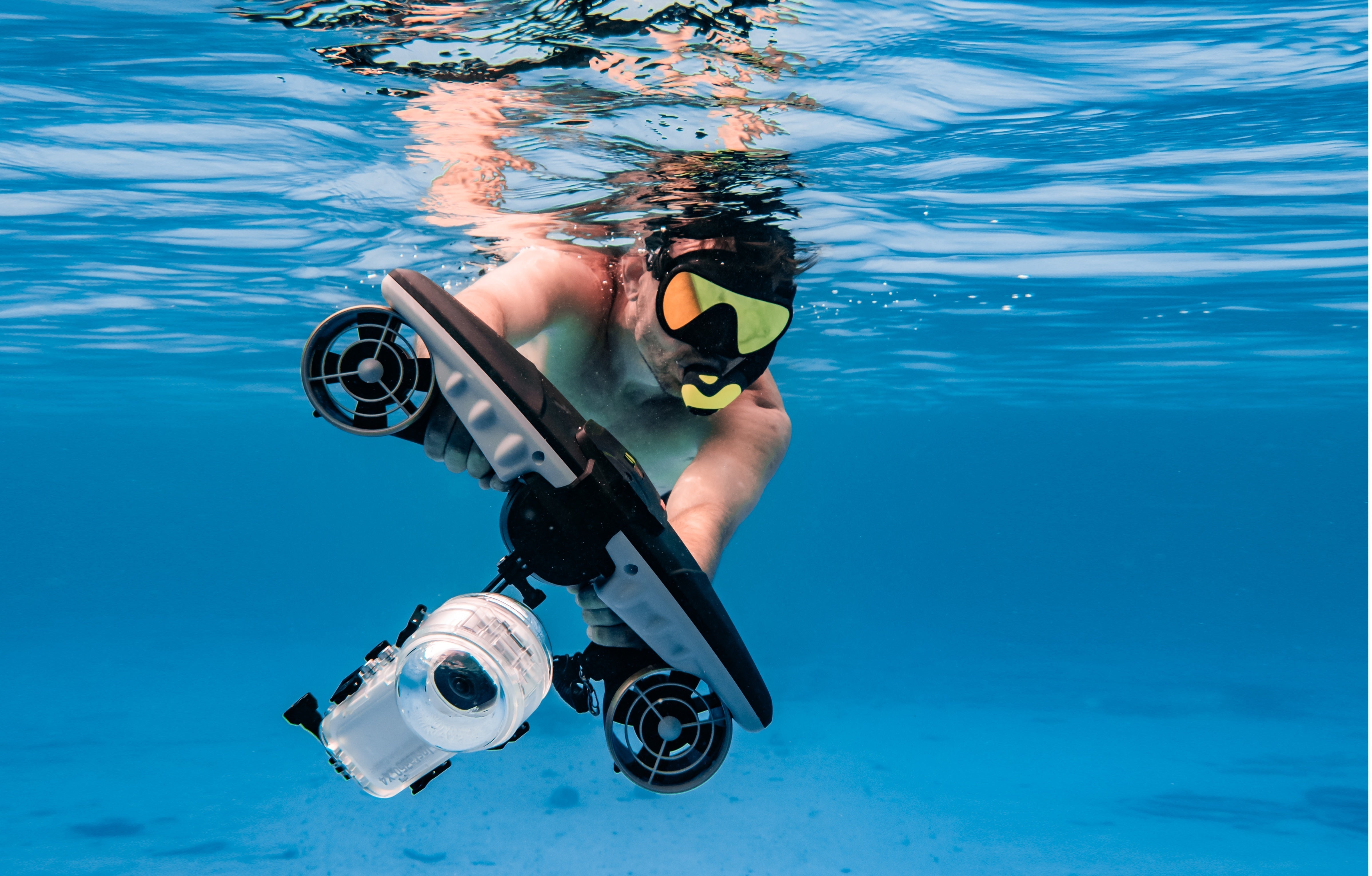






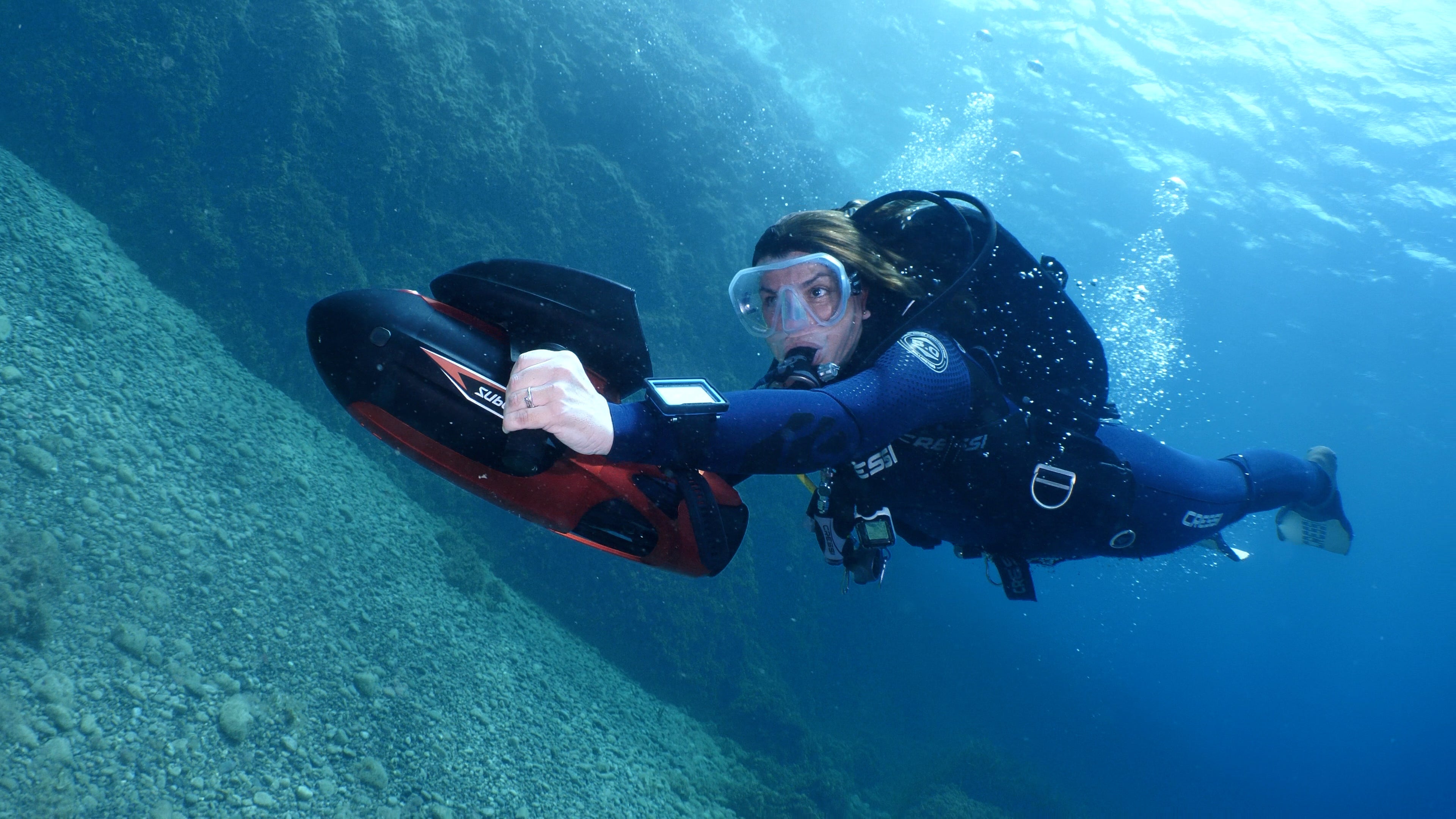
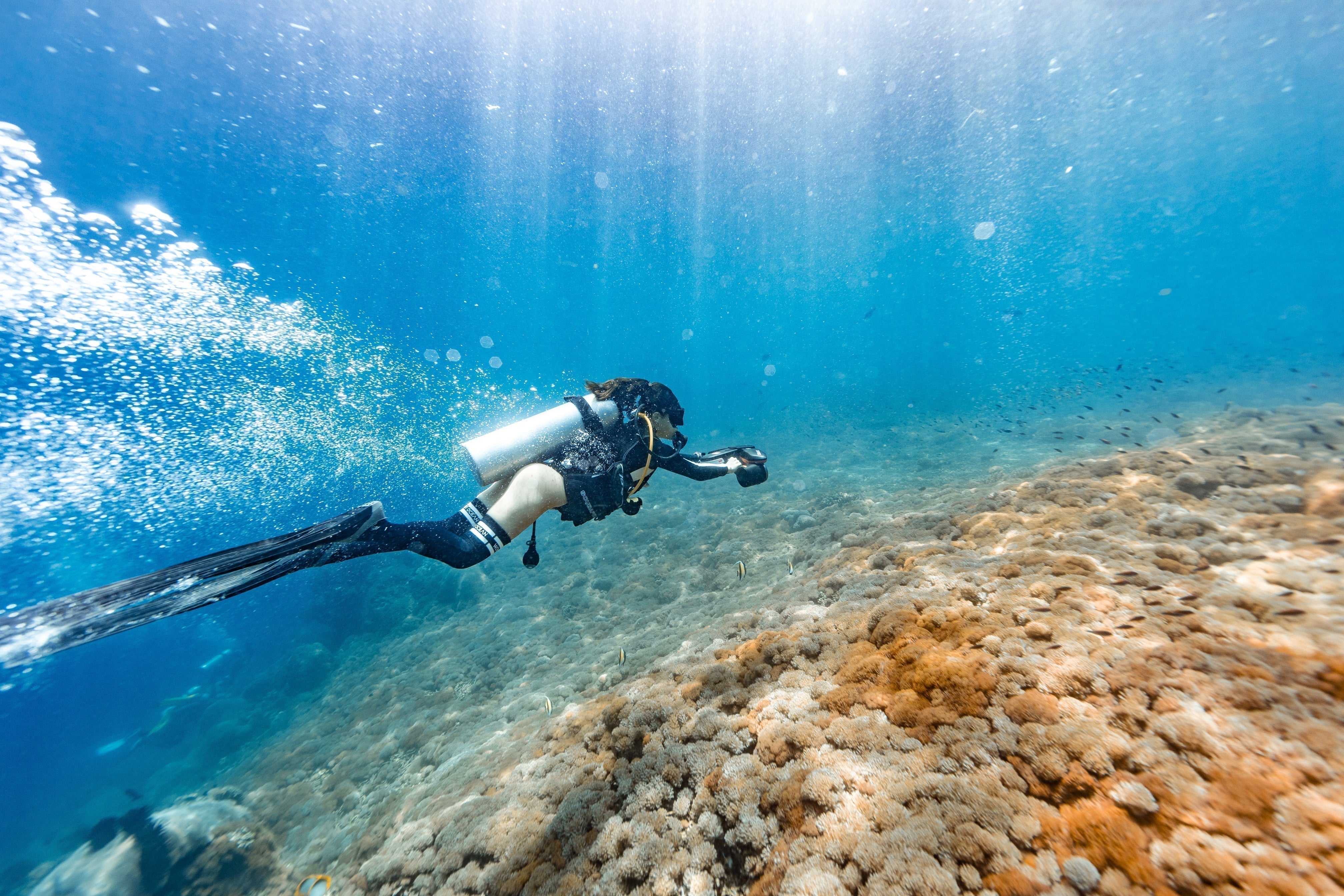
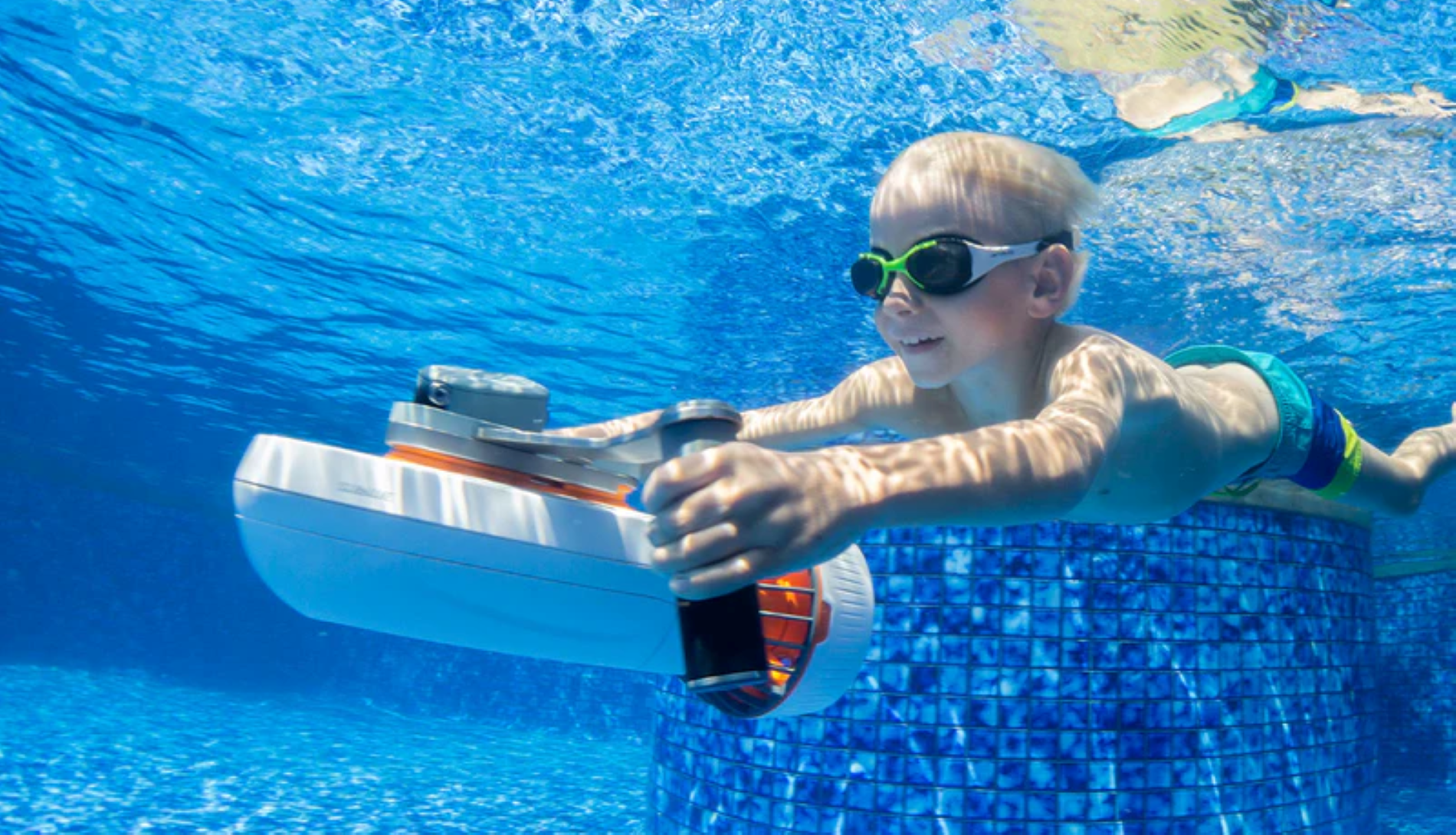
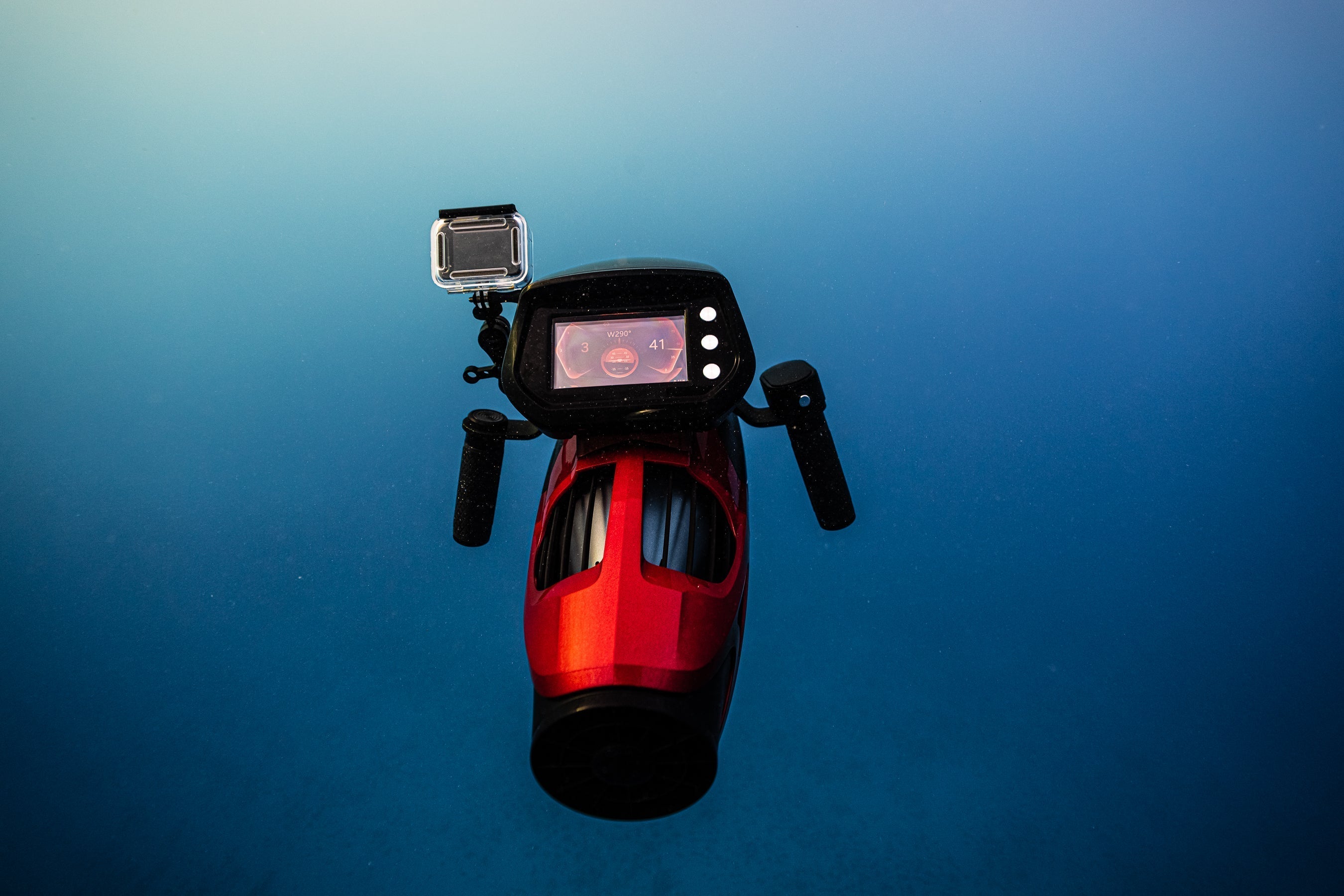
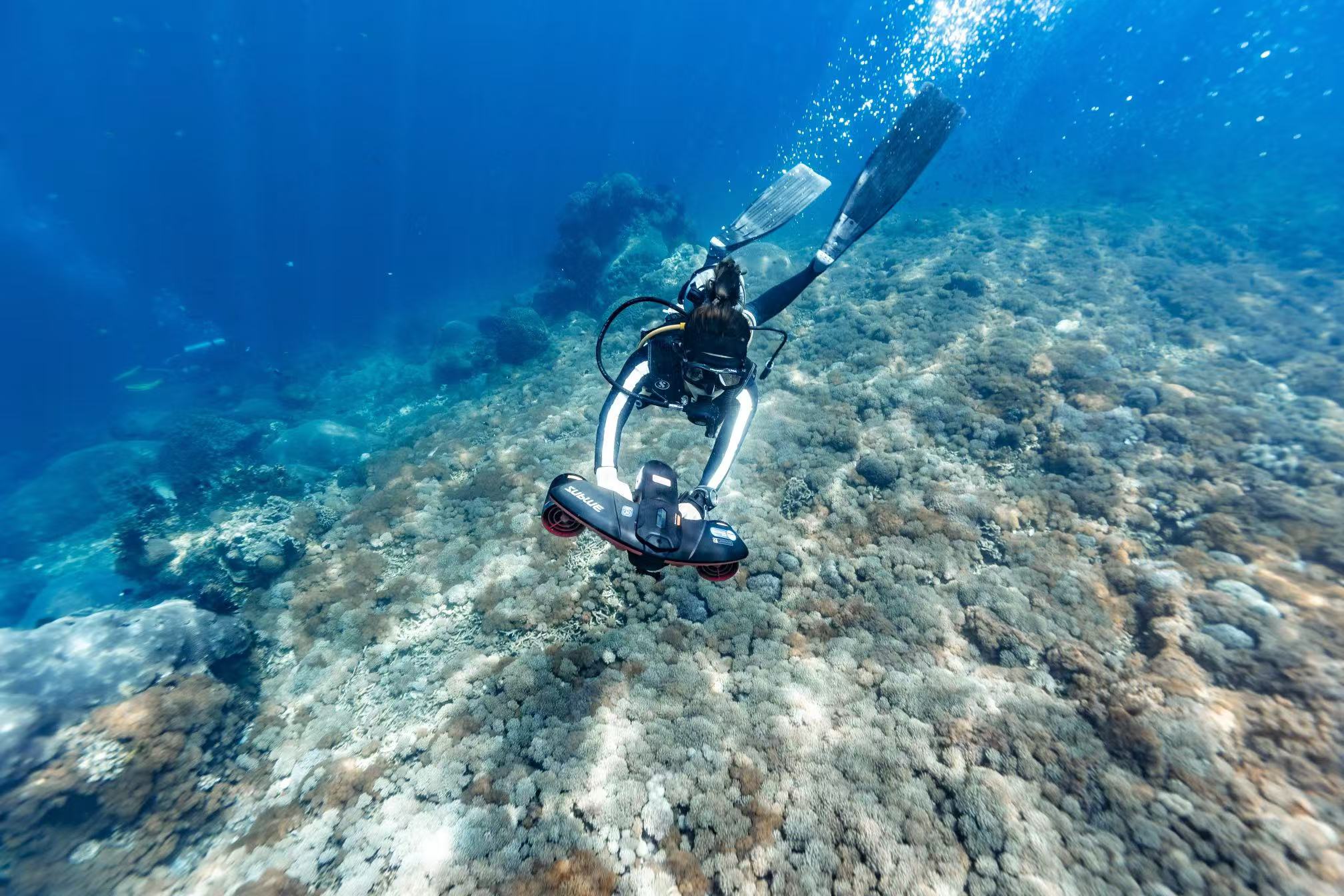
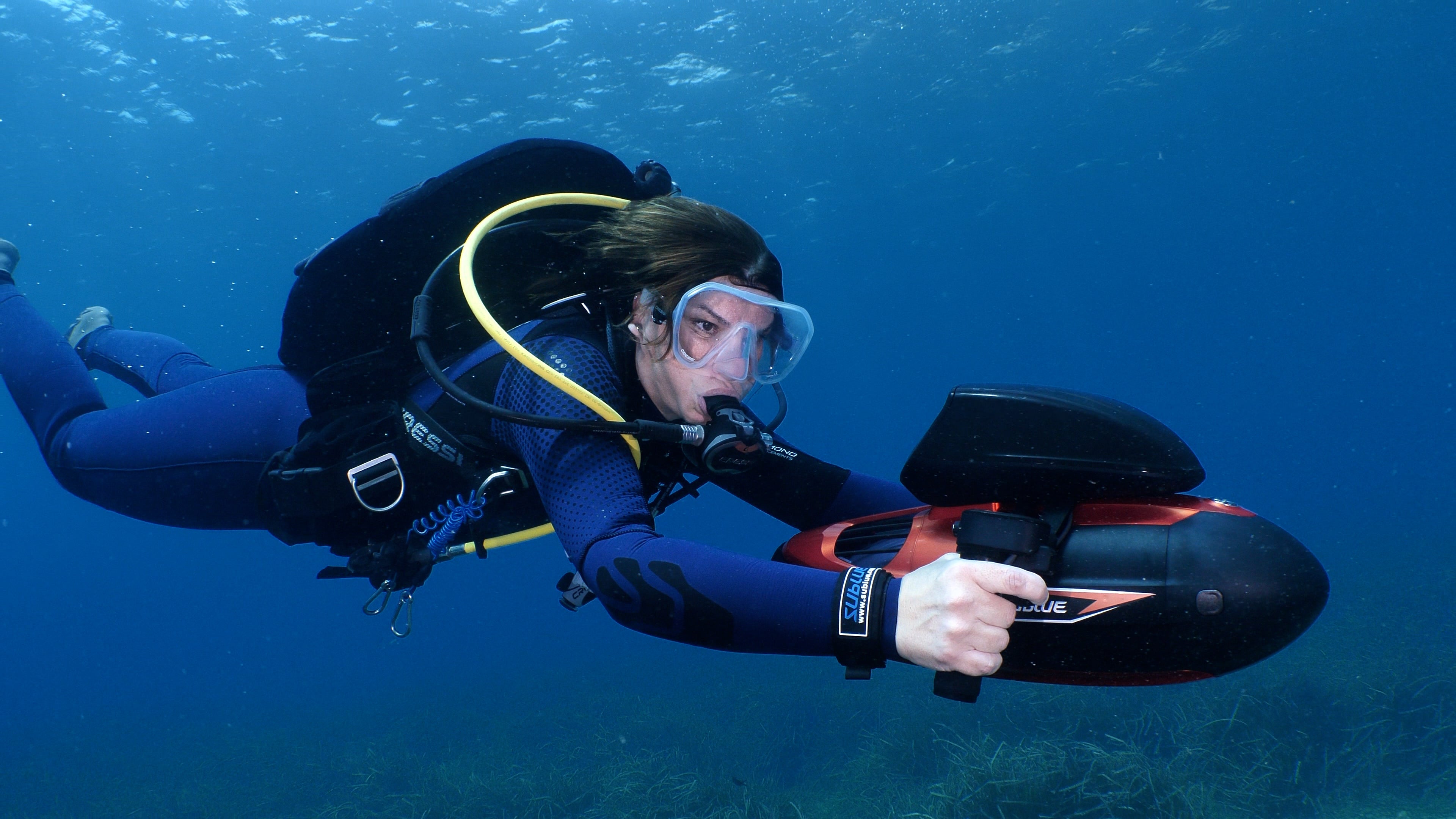
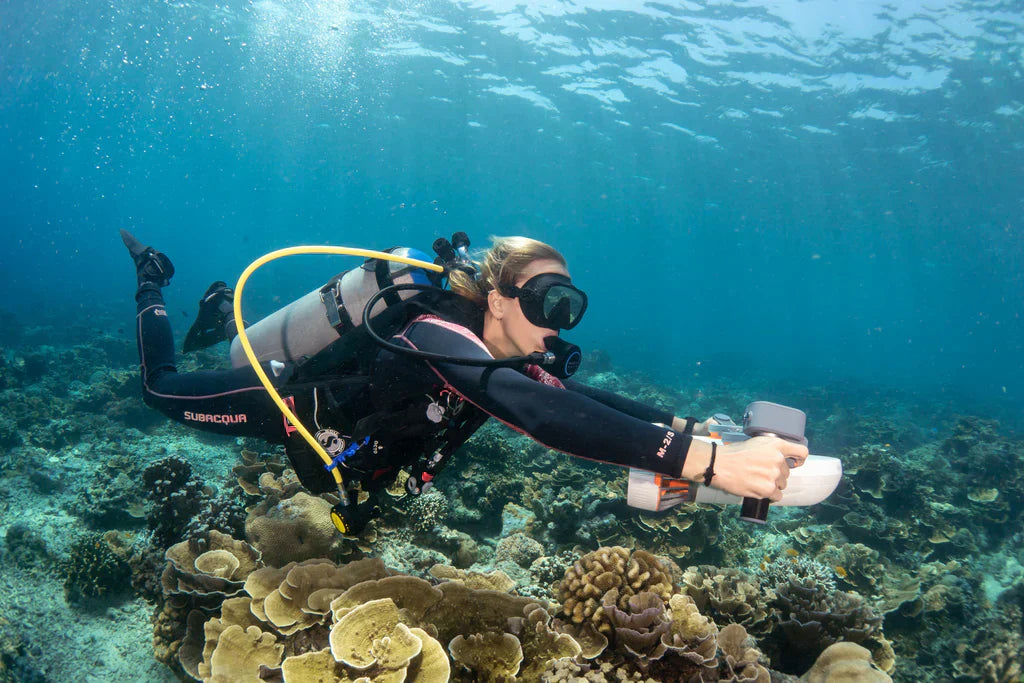
Partilhar:
O Guia Profissional do Mergulhador para Scooters Subaquáticas: Desempenho, Técnicas e Equipamento
O Guia Definitivo para Equipar o Seu Iate com os Mais Recentes Brinquedos Aquáticos Essenciais